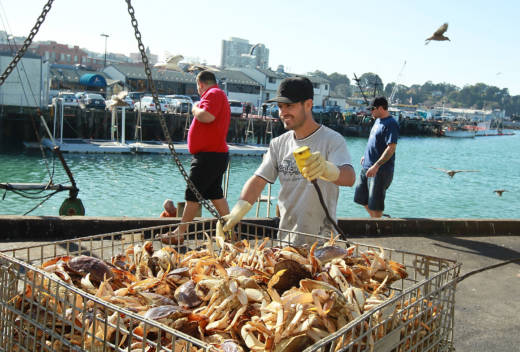Marine life across North America will experience a substantial shift northward over the next few decades, according to a new comprehensive report that looks at how climate change will alter the habitats of 686 marine species.
“As water warms up in some places it allows fish to colonize,” says Malin Pinsky, an ecologist at Rutgers University and co-author of the study. “But if it gets too hot, the species gets driven out of the region. This is something that we already see happening all over North America, all over the world.”
Pinsky says it’s hard to say how far, how soon this redistribution of marine life will play out gradually over the next 80 years and could continue long past the 21st century, depending on what choices society makes in terms of reducing greenhouse gas emissions. It could also have big implications for California’s iconic crab and salmon fisheries.
Researchers at Rutgers University combined data from U.S. and Canadian government surveys that looked at where species have historically been found, with models from the Intergovernmental Panel on Climate Change that project future environmental conditions.
They then did projections using both low and high estimates of future greenhouse gas emissions. Taking the lowest estimates into account, researchers found there will still be a substantial shift toward the North Pole, although it would reduce the extent of the shifts by one-half to two-thirds. Pinsky says “pretty much” all species would be affected, though not by as much as with higher emissions.

